I recently purchased these two books from abebooks.com. They are the second and fourth editions, 1926 and 1933 respectively. I don’t remember what they cost, but I would have easily payed double. They are filled with illustrations and descriptions of a variety of domestic ice and mechanical refrigerating machines. Principles of operation, compressor selection, refrigerant selection as well as common engineering tables and charts fill the pages of these two gems. I purchased both (and am looking for the rest), in order to see what advancements occur in the course of the few years between their publication. The fourth edition includes much more information in the way of thermodynamic principles as well as an extensive compendium on air conditioning. But, altogether both books were fantastic.
There is lot written in both editions on ice box refrigeration, that is, passive cooling by ice block. This method of refrigeration was still quite common by 1933 even though the cost of mechanical refrigerators were coming down rapidly. Unfortunately, the quality of these machines came down as well. No where near the throw away machines of today, but by 1933 you can see an industry move towards hermetic compressors and early forms of the capillary tube refrigerant control which today dominates domestic refrigerating machines.
.
Some of the early ice boxes were literally just that, an insulated box with a liftable lid where a block of delivered ice could be placed inside along with the perishables one hoped to preserve. Theses early ice boxes did not work particularly well due to the fact that there was little circulation within them. Later, upright insulated chests with a door or doors on the front became common with an ice block placed in a compartment in the top or on one side of the cabinet. Various configurations were devised to create a natural convective draft with the cold air from the ice falling and displacing warmer air which is directed upwards. Mechanical refrigeration, both vapor compression and absorption type, were still seen as too expensive to replace these ice boxes for most people. Even the well designed, well insulated boxes could barely maintain temperatures of 40 to 50 degrees fahrenheit. Mechanical refrigeration would deliver much lower, reliable temperatures.
.
Some of these early domestic refrigeration systems were suited for restaurants and institutions. These were often ammonia refrigerant, water cooled systems and in some cases were installed in a basement or room other than where the refrigerating cabinet itself was located. They were very heavy built and quite expensive. It even looks like existing ice boxes were retrofitted with cooling coils in place of the ice block.
.
This machine was built for mechanical refrigeration, but it’s easy to see the similarities in cabinet design.
.
This is a design I really like. Although the compressor and condenser are in the bottom ‘bathing’ the cabinet in heat, I have to say I like the individual cabinet doors with glass. Instead of one single door which may change the air out of the entire refrigerated space, there are different doors holding slightly different temperatures too. I think this unit has multiple evaporator coils.
.
This too has more than one compartment, but here there is one refrigerated space and one frozen much like modern units.
.
I liked this unit mainly because I like the simplicity and the aesthetically pleasing wood construction. Many of these refrigerators in the 1920s did not use direct expansion evaporators, instead they cooled a tank of brine, usually a salt solution added to the tank during installation. It should be noted that most of these cabinets had a wood frame with layered insulations of cork, paper, corrugated paper, mineral wool and dead air space.
.
Another early mechanical refrigerator with a very heavy heat pump.
.
The evaporator brine tank and ice maker.
.
A direct expansion evaporator. This is a flooded low side float type. Notice the round, frozen portion at the top. It is the end of a cylinder which connects all of the evaporator coils together to form a common volume. The copper line coming in from the right delivers high pressure liquid refrigerant from the receiver into the evaporator by a float valve in the cylinder. The liquid rests in the coils until the temperature in the cabinet warms the fluid enough to cause it to evaporate under the pressure conditions with the suction line.
.
A simple reciprocating type with coil finned condenser. The liquid receiver is obvious in the foreground. It carries excess liquid refrigerant ensuring the evaporator gets only saturated liquid. It also allows for less critical refrigerant charges.
.
A diagrammatical view of the above mentioned system. I rather like this drawing because it shows the layout of the components quite well and at the same time an easy to understand display of the cycle operation. Notice the float valve in the flooded evaporator at the top as well as the position of the suction tube.
.
This is a very odd machine I think, but was not uncommon in commercial installations. The ball on the right contains the compressor and condenser while the ball on the left is the evaporator. It was charged with sulphur dioxide through the hollow drive shaft.
.
Most of the reciprocating type compressors had pistons similar to these two types. Surprising to me, although the discharge valve was in the head of the cylinder, the intake valve was actually in the piston. The suction line of these systems entered into the crankcase and on the suction stroke the valve would be drawn open. In the truncated type piston, the vapor would come in the side of the cylinder instead of the crankcase. The lower set of piston rings helped prevent crankcase oil from leaving the compressor.
.
An example of a hermetic unit. This is from a GE Monitor Top or one very similar. When most people think of an antique refrigerator, it’s usually one of these. They made millions of them and were probably considered one of the first affordable refrigerators. It’s a reciprocating type with the motor fully enclosed in the shell. There are always service issues with the shaft seal of an open drive compressor which is usually belt driven or directly coupled. Hermetics avoid this at the expense of efficiency and more difficult repairs when problems do occur. These systems were flooded evaporator type with a high side float. Notice the layers of insulation between the evaporator and the compressor. This represents the top of the cabinet. The entire vapor compression unit could be removed from the rest of the box for repair or replacement, a feature not uncommon at the time.
.
.
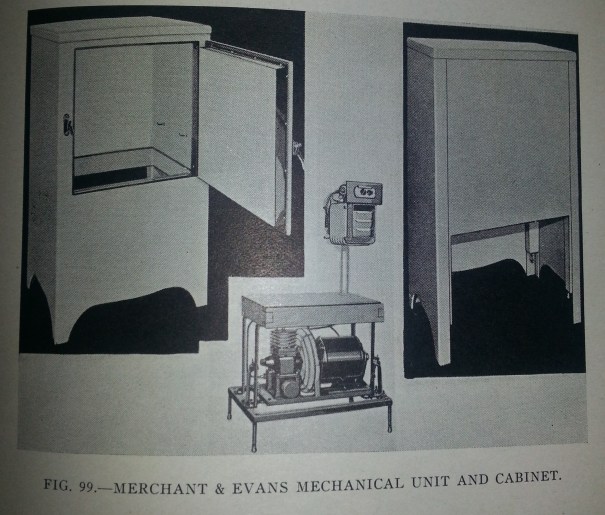 Another modular system, but from the bottom. Refrigerators existed where the heat pump was inserted through the back as well.
Another modular system, but from the bottom. Refrigerators existed where the heat pump was inserted through the back as well.
These were just a selection of some beautifully well engineered machines used in people’s homes in the 1920’s and 1930’s.
-M. C. Pletcher


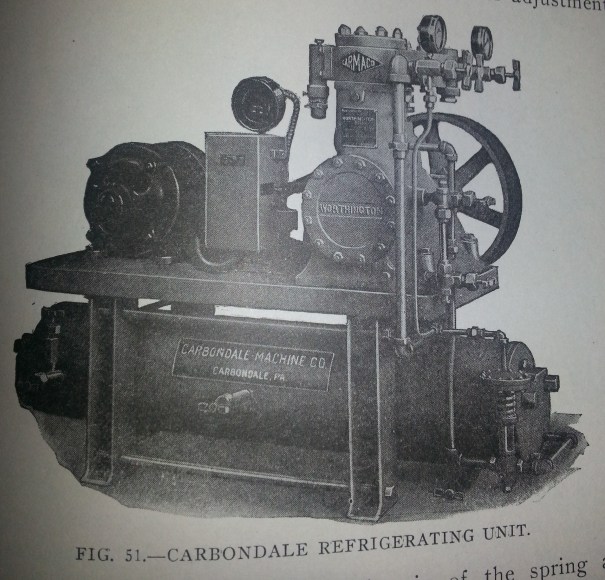

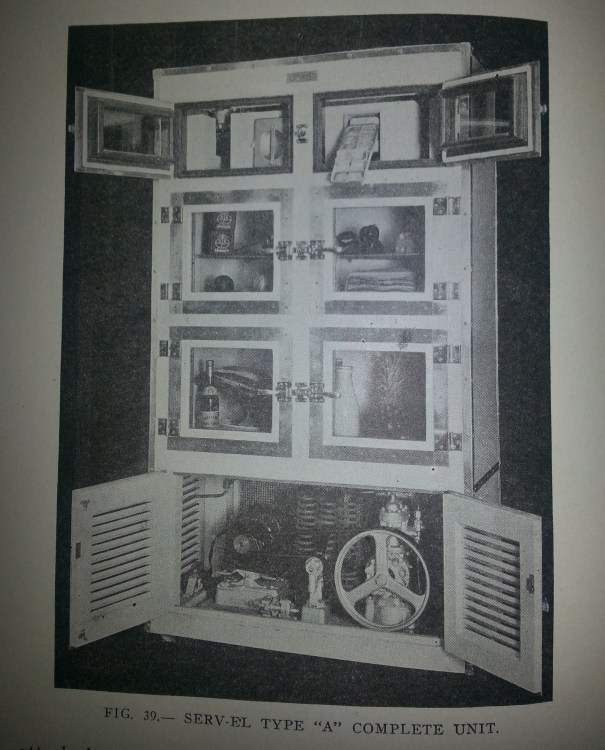
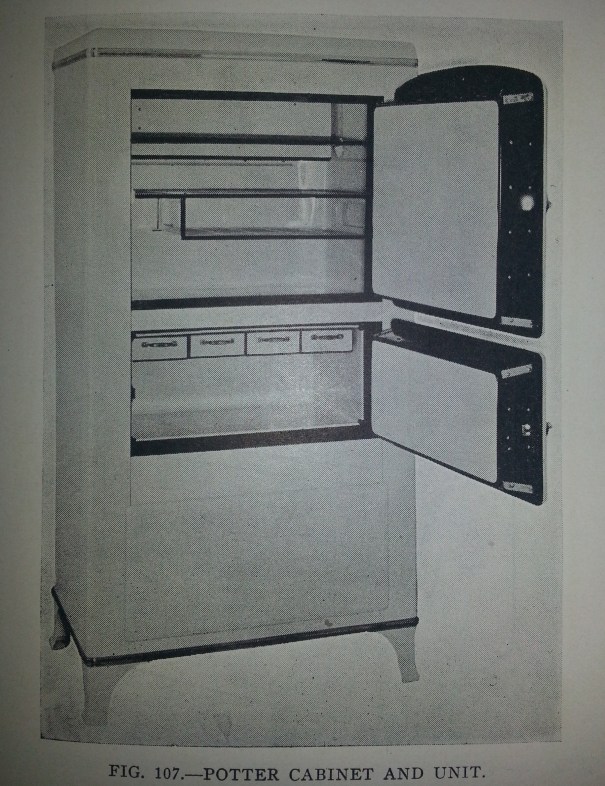

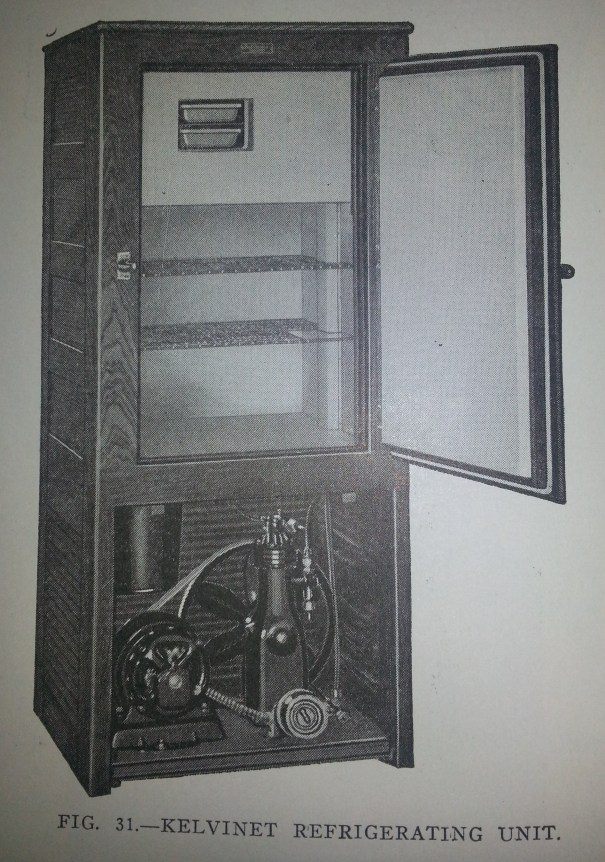
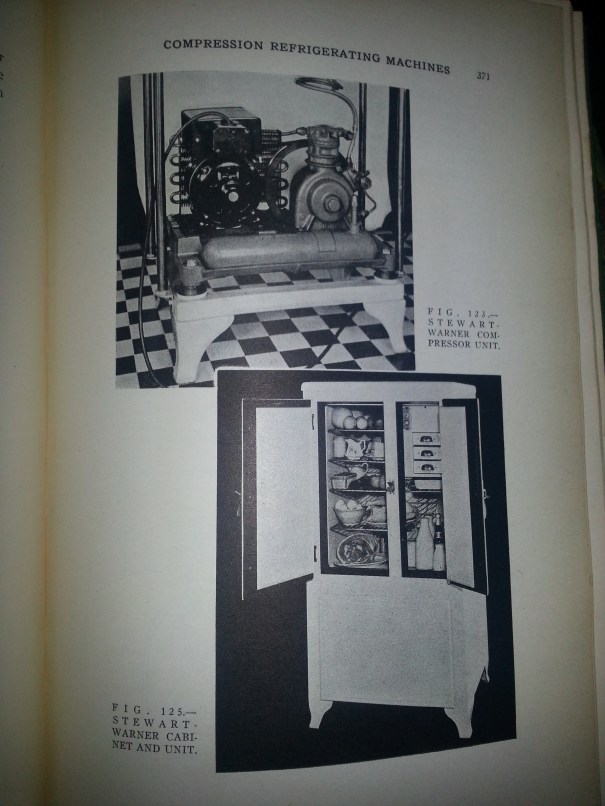

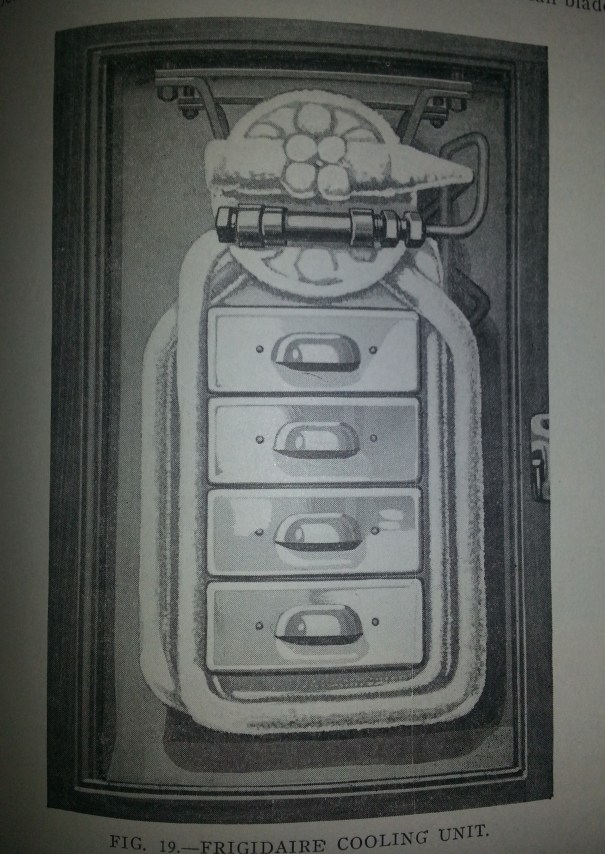
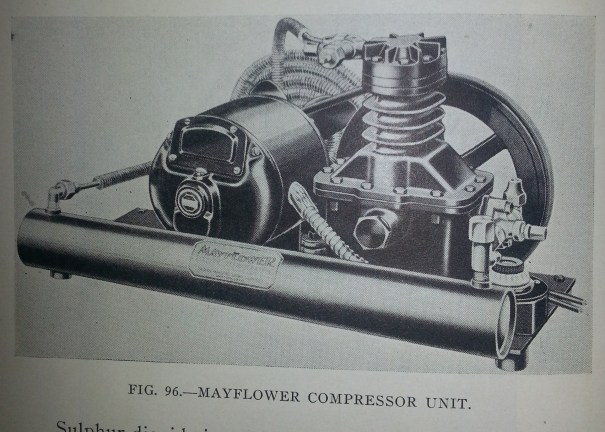
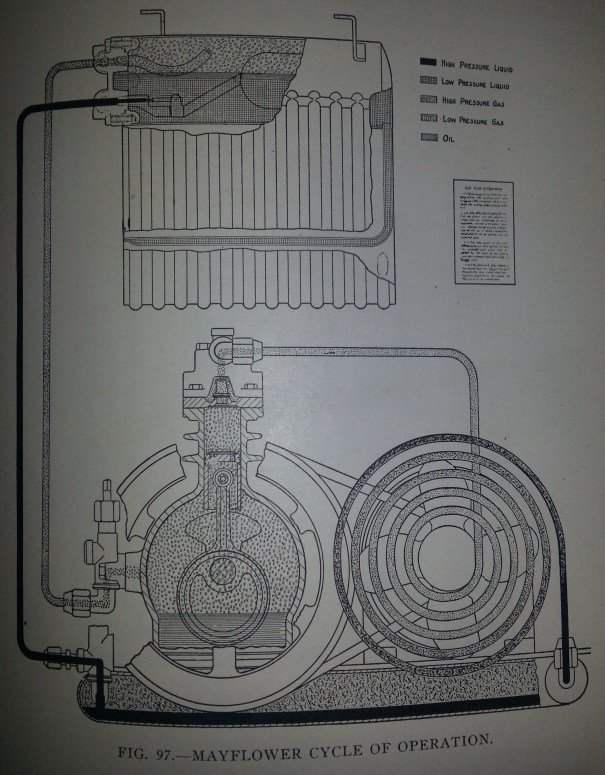
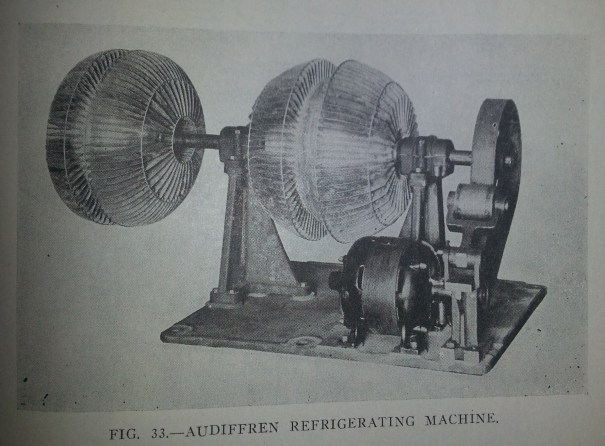
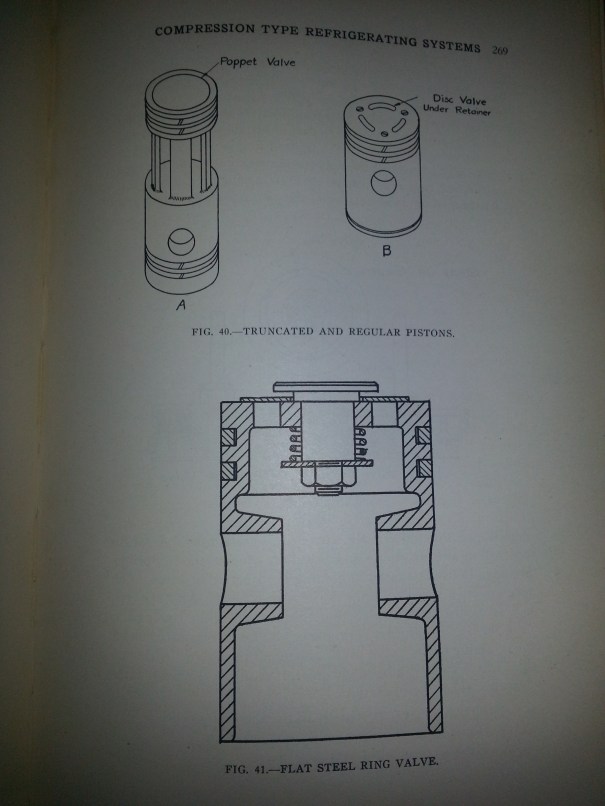


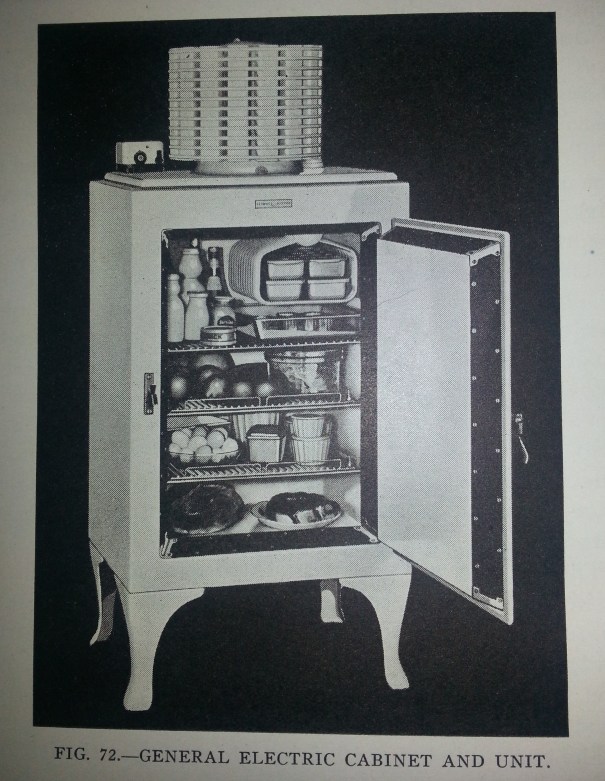
It’s great to see someone with the same appreciation for antique refrigeration engineering. The quality of craftsmanship and the time spent on the drafting table are truly something that people have forgotten or don’t care to appreciate. I have a pretty extensive library of old refrigeration technical manuals on ice boxes and even Ice making big equipment. Great article I’m glad I’m not alone.